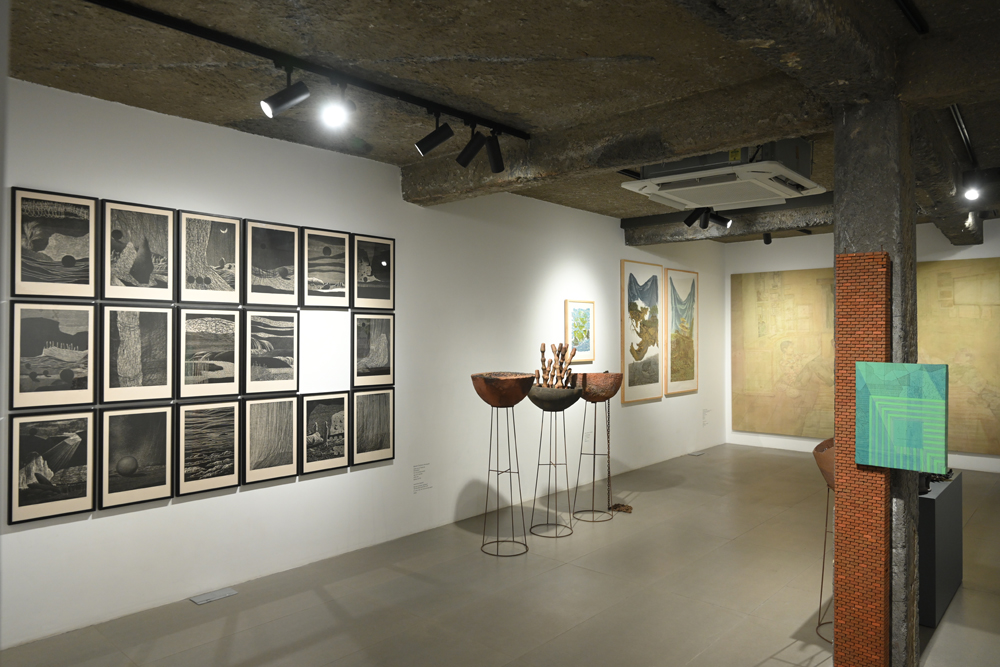Baroda Unbound: City as Studio
Baroda Unbound: City as Studio celebrates the city as a crucible of creative exchange. In Baroda’s history, art has always been about connection – between the village and the city, between classical craft and modern abstraction, between the personal and the political. This exhibition gathers nine artists whose practices map the living grammar of Baroda — a pedagogy that made the studio a public field. Here, material histories and personal archives are worked into visible knots: clay that remembers the hand; stitched rope that carries domestic ritual; woodcut matrices that hold the grain of labor; stained canvases that record mediated intimacies. The works refuse tidy lineage and instead practice inheritance as translation — learning from craft while questioning its social and political legacies.
Ayantika Sajwal, Bikash Chandra Senapati, Darshini Dalwadi Patel, Geetanjali Bayan, Kajal Chaudhary, Nalinakshya Talukdar, Sanyukta Kudtarkar, Surendra Dewasi, and Suvrdeep Samanta create a chorus of methods. Some are alumni of the Faculty of Fine Arts, MSU Baroda; others arrived through residencies and studios, but all engage Baroda’s insistence on material intelligence, dialogic pedagogy, and creative exchange.
Baroda here is a method, not a museum: a place that teaches makers to translate vernacular knowing into contemporary critique. These works are experiments in that method — testimonies of making as a form of public thought. Ultimately, Baroda Unbound: City as Studio is about continuity and renewal. It gestures to the 1956 Baroda Group’s collective vision and the 1961 art mela’s spirit of inclusion, asking us to reflect on what Baroda means today. By placing these nine young artists in conversation with each other, this exhibition reflects on how Vadodara remains a vital cultural meeting point for art and its practitioners.
Text by Prayag Chakradhar

